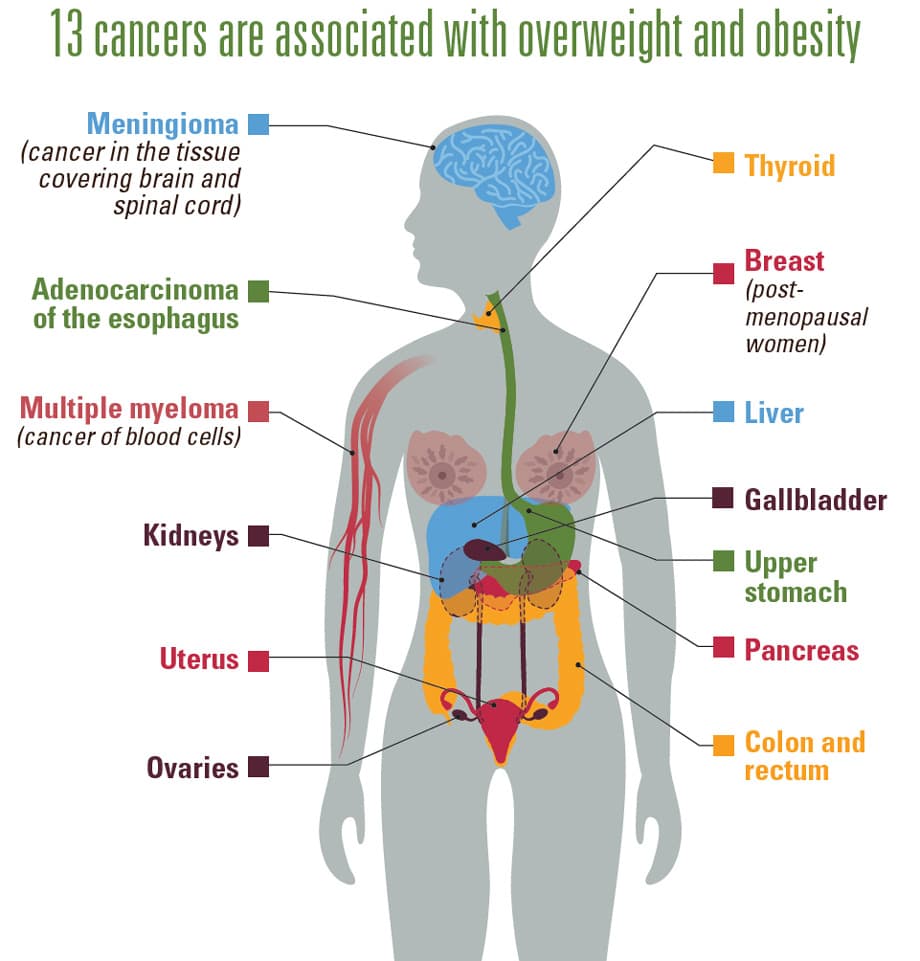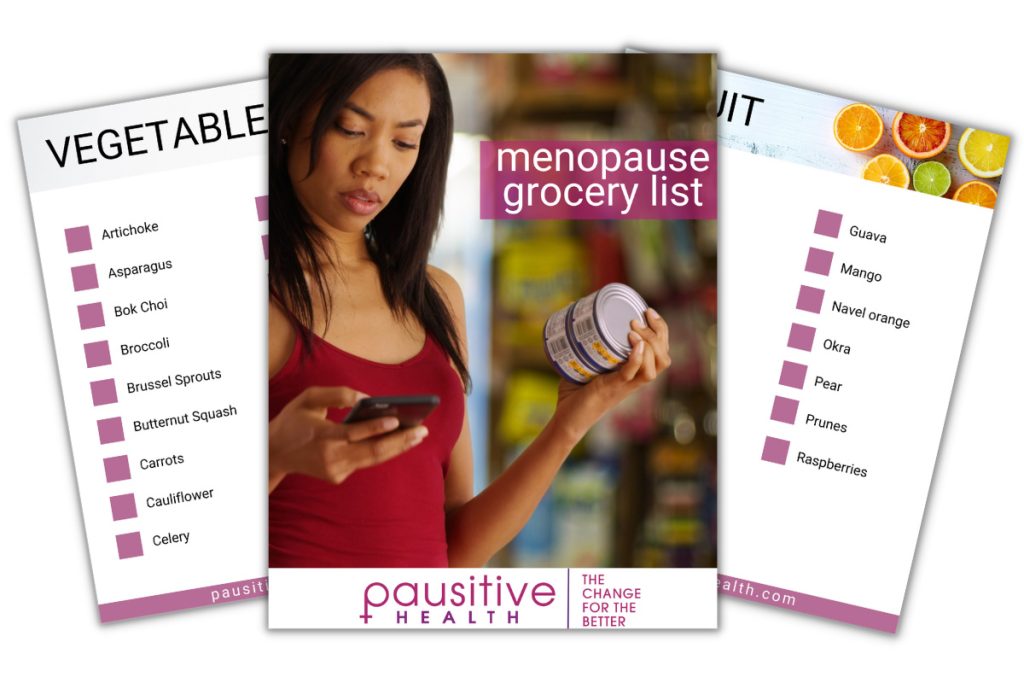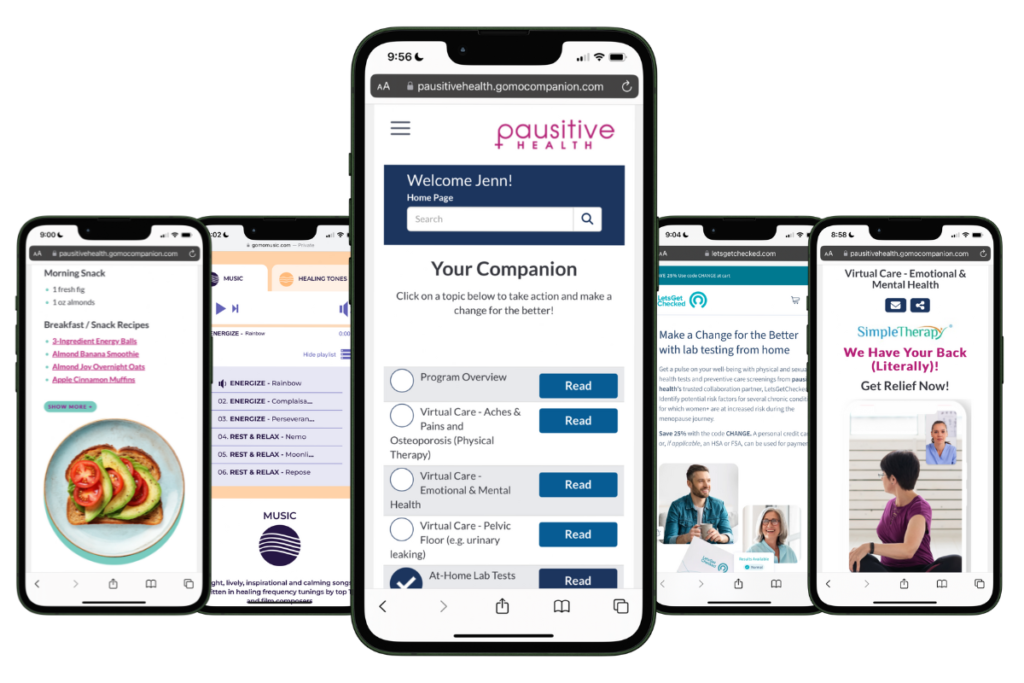As a Latina/Hispanic woman+, the menopause journey is a perfect time to focus on your health and well-being and to start building/strengthening a healthy lifestyle. Doing so can help reduce the severity of menopausal symptoms, reduce the risk of chronic conditions, which increase as a result of the hormonal transition, and set you up well for the rest of your life. Dive into the Latina/Hispanic woman’s prescription for health.
How Hispanic/Latino diversity impacts health
As of 2022, the Hispanic/Latino community was 19.1% of the U.S. population, according to the U.S. Census Bureau.
Like other racial groups, it is a diverse population. Depending on the ethnicity within the group there can be high rates of immigration.
Health status can be impacted by:
- differences in culture and health beliefs
- the degree of acculturation (adaptation to/adoption of traits from another culture)
- social determinants of health (SDOH) like income, levels of education, access to healthy food and healthcare, and exposure to bias/discrimination/racism
Top 5 Hispanic/Latino Groups in the U.S.
| Ethnic Group | % of the Hispanic/Latino Population | % Immigrants |
|---|---|---|
| Mexican | 60% | 29% |
| Puerto Rican | 9% | 2% |
| Salvadoran | 4% | 53% |
| Dominican | 4% | 50% |
| Cuban | 4% | 53% |
Source: The Pew Research Center
Hispanic health does not look the same across all groups of this highly diverse population, encompassing many races and countries of origin.
While medical research often lumps Hispanics/Latinos into one category, when they are separated out, the groups are often based on language. Others may focus on country of origin or place of birth. This variation makes it difficult to compare studies.
Furthermore, some conditions may be underdiagnosed or underreported because Hispanics/Latinos have higher rates of being uninsured and not having routine care. And studies/surveys rely on a person having interactions with the healthcare system.
So, what does all this mean for you? It’s critical you advocate for yourself and take your health seriously.
Exploring the most common health conditions and looking at the major areas where health disparities exist can help you take charge of your health during the menopause journey and increase the likelihood you get the care you need and deserve.
Menopause can be a time for a renewed sense of purpose and greater health and well-being.
As an Hispanic woman+/Latina, a prescription for better health, includes understanding:
- health risks
- health disparities
- coping strategies
These three factors can impact your overall well-being during the menopause journey and beyond.
The Hispanic population in the Southwest lived 3 years longer
than the non-Hispanic white population in the Southwest.
The Hispanic “Health Paradox”
If you’re familiar with the Hispanic “Health Paradox,” which shows the potential for a longer life span as a Hispanic person, you might be asking yourself why these disparities and gaps in research matter.
The paradox is a finding published by Kyriakos S. Markides and Jeannine Coreil in 1986 that indicated the Hispanic population in the Southwest (primarily those of Mexican descent):
- Lived longer than the non-Hispanic white population who resided in the same geography.
- Had lower death rates.
The observation indicated this longevity difference (approximately 3 years) compared to non-Hispanic white people existed despite:
(1) higher rates of chronic conditions like obesity and diabetes
(2) lower incomes, less education, and less access to healthcare (on average for the group as a whole).
More recently, it was found that the longevity advantage is more concentrated in those who immigrated to the U.S.
Here’s the reality, though.
That advantage erodes the longer a person lives in the U.S. and takes on unhealthy eating habits, low levels of physical activity, and other elements of a lifestyle that, unfortunately, is common.
This paradox has persisted in the Latino population even amidst challenging circumstances. Take for example, the COVID-19 pandemic. It had a greater impact on the Hispanic community than the white population. Despite that, as of 2022, the greater longevity is still the case.
80 years old was the life expectancy for Latinos in 2022,
and 77.5 years for the white community.
Prescription for Hispanic/Latina health
Even with this paradox, you can’t let your guard down.
Chronic conditions can change a person’s life expectancy, and it can happen quickly. Conditions commonly observed in the Hispanic/Latino community include:
Another condition seen more often in Hispanic women+/Latinas is pelvic organ prolapse (POP).
Several of these conditions can be intertwined. For example, being overweight/obese increases the likelihood of developing high blood pressure, diabetes, and certain cancers.
And having hypertension and diabetes increases the risk of chronic kidney disease.
In discussing each risk we’ll also touch on the disparities for these conditions for Latina/Hispanic women+.
What is a health disparity?
What is a health disparity? Healthy People 2030 (an initiative that sets national objectives to improve health and well-being through 2030) defines a health disparity as a
“health difference that is closely linked with social, economic, and/or environmental disadvantage." These health differences can negatively impact various groups of people who have historically faced greater barriers to health.
Health disparities can be seen relative to factors such as race, ethnicity, age, sex, gender, mental or physical (dis)ability, sexual orientation, or geographical location. Therefore, you, as an individual, may face a potential combination of different health disparities.
Additionally, exposure to bias/discrimination/racism, which can show up as medical gaslighting, is another major risk factor that has a negative impact on the health (e.g., greater prevalence and severity of disease, higher rates of death) of those who are subjected to it as well as the care they receive (or don’t receive).
Always talk with your healthcare practitioner to understand the health conditions for which you may be at risk.
Make a change for the better
Now, let’s review some of these conditions for which there are health disparities so you can make a change for the better!
If you want to quickly jump to a section of interest, click on the section below.

45.7% of Latina women are obese
according to The State of Obesity 2022 report.
1. Overweight/obesity
Ethnicity and economic circumstances can be associated with varying risks of obesity. For example, a study found wealthier Puerto Ricans were more likely to be obese than wealthier Central Americans.
Place of birth can also play a role. Those born outside the U.S. were found to be less likely to struggle with obesity compared to those born in the U.S.
There are other potential contributory factors in some individuals which impact the likelihood of obesity:
- A traditional diet that is higher in carbohydrates (> 50% of daily calories)
- Diet quality – higher in people with Mexican, Dominican, and Central American ancestry
- For those who have immigrated to the U.S., taking on the unhealthy eating habits and physically inactive lifestyle common in the U.S. increases the risk of obesity. And the longer a person resides in the U.S., the more likely they will become obese.
- Perception of beauty – A larger body with more curves is more likely to be viewed positively in certain segments of the Hispanic community and the degree of identification with a person’s ethnic heritage.
- Access, or lack thereof, to healthcare practitioners with cultural competence, sensitivity, and humility, and, if needed, bilingual proficiency
Obesity can increase your risk of other conditions, including high blood pressure, diabetes, certain cancers, high LDL (“bad”) cholesterol, and metabolic dysfunction-associated steatotic liver disease (MASLD; previously known as fatty liver disease, which can increase the risk of developing cirrhosis).
So, it’s important to take action to reach and maintain a healthy weight, which for most people includes a focus on healthy eating, regular physical activity, managing stress, and getting enough high-quality sleep.
As you might notice, these actions are ones over which you likely have a greater degree of control, depending on your particular situation, because they are lifestyle-related.
Finally, obesity is historically defined as having a body mass index (BMI) of 30 or greater.
BMI is supposed to measure your body fat based on your height and weight. A goal BMI would be between 18.5 and 25. Unfortunately, it doesn’t consider age, sex, bone structure, muscle mass, and fat distribution. It also potentially disadvantages (by incorrectly assessing body fat and obesity status) women, those who are athletes, the heavily muscled, those who are Black, Latino/Hispanic, those of Asian stature with slight stature, and Indigenous Peoples. Therefore, it’s important, as always to discuss your particular situation with your healthcare practitioner.
2. High Blood Pressure (Hypertension)
High blood pressure is when your blood puts too much force on the walls of your arteries and veins. This can make them weaken and become rigid.
Hypertension is usually diagnosed over 2 to 3 office visits if your pressure is greater than 130/80. It may be diagnosed in 1 office visit if your blood pressure is greater than 180/110.
Among Hispanic women+/Latinas, high blood pressure is seen more commonly in those who are Cuban, Dominican, or Puerto Rican.
Hypertension is often referred to as “the silent killer” because most people don’t have symptoms. As a result, for most, the only way to know if you have high blood pressure is by getting it checked. There is variability across the various recommendations regarding how frequently you should get your blood pressure checked based on your age and particular situation, particularly if you have risk factors for hypertension.

3. Cardiovascular disease (CVD)
According to the most recent statistics from the American Heart Association, 42.7% of Hispanic women have CVD, and it is the leading cause of death.
Cardiovascular disease includes conditions like:
- high blood pressure
- heart disease
- stroke
- heart failure
- abnormal heart rhythms
The condition has many risk factors, and race/ethnicity is one of them.
In addition to typical risk factors for CVD – diabetes, hypertension, obesity, elevated cholesterol, and smoking – Hispanic women+/Latinas also have a greater prevalence of some pregnancy-related conditions, which have been associated with a higher risk of CVD. They include gestational diabetes and premature delivery.
Ethnic variability has been found with regard to some of these common risk factors for CVD:
- Obesity – higher in the Puerto Rican community
- Diabetes – higher in people of Mexican ancestry
- Hypertension – higher in individuals with Dominican, Cuban, or Puerto Rican heritage
- Smoking – higher in those who are Cuban
Some additional contributory factors that raise CVD risk (or which have been associated with CVD) and are seen at higher rates in the Hispanic/Latino community include:
- COVID-19
- Exposure to environmental toxins
- Exposure to bias/discrimination/racism
Interestingly, although Hispanic women+/Latinas are more likely to develop heart failure, they are less likely to experience certain abnormal heart rhythms like atrial fibrillation (aka afib). And in alignment with the Hispanic health paradox, deaths related to cardiovascular disease occur at lower rates than white women+.
4. Diabetes
Diabetes occurs when your body cannot make (Type 1) or use (Type 2) insulin effectively. Insulin helps convert sugar (glucose) into energy for your body to use. So, when insulin is not made or used well, sugar builds up in your blood and organs.
The most common symptoms are increased thirst and urination (pee). But other symptoms include tiredness, numbness or tingling in your hands or feet, and slow wound healing.
Diabetes that is not properly managed can lead to additional problems like heart and kidney issues, vision loss, and amputations, so it’s very important to seek medical attention if you are experiencing symptoms. It’s most commonly diagnosed with blood tests, usually with an A1C. This measures your average blood sugar levels over the past 3 months. If your A1C is 6.5% or higher, your doctor may diagnose you with diabetes.
Screening guidelines may differ depending on the group developing them, e.g., ADA vs. the U.S. Preventive Services Task Force (USPSTF), but, generally, lab work should be done at least every 3 years starting at 35 years old. But your doctor may want more frequent screening or at an earlier age, depending on your risk factors and personal clinical status.
There are more ways than ever to help monitor and treat diabetes, so taking steps to help manage it – healthy eating, regular physical activity, maintaining a healthy weight, finding ways to cope with stress, and regular check-ups (including your feet, eyes, and lab tests) – are well worth your efforts!
Impact of diabetes and hypertension in Hispanic women+/Latina
Knowing these health disparities is critical because diabetes and hypertension, which are seen more often in Hispanic women+/Latinas can increase the risk of 3 of the top 5 causes of death in all women+.
Those are:
- heart disease
- stroke
- Alzheimer’s disease
Plus, during the menopause journey, your risk for chronic conditions increases, including heart disease, weight gain, and potentially dementia. 4

Hispanic women+/Latinas have a 36% likelihood of developing cancer
at some point over a lifetime.
Source: CA: A Cancer Journal for Clinicians
5. Cancer risks in Hispanic and Latina women
With a 36% chance of developing cancer, Hispanic women+/Latinas should know the risk factors, as it’s a scary diagnosis to get.
Prevention is key! When many types of cancer are caught early, a person can go on to have a long life.
Cancer is when certain cells in your body grow uncontrollably. It can begin anywhere and, if left untreated, spread to other parts of your body. But not all cancers are equally deadly. Certain types are less aggressive and have high survival rates.
Risk factors for several cancers are related to obesity or lifestyle (e.g., unhealthy eating, insufficient physical activity, consuming alcohol, tobacco use).
And for cancers in which infection may play a causative role – cervical (HPV), stomach (Helicobacter pylori), gallbladder (Helicobacter bilis and Helicobacter pylori), and liver (hepatitis B and C) – the frequency is greater in Hispanic women+/Latinas.
Breast Cancer
Although the risk of breast cancer is lower compared to white women, Hispanic women+/Latinas are more likely to have:
- A more aggressive form.
- Be diagnosed at a later stage and to die from it.
Therefore, screening is vitally important. It usually starts with a mammogram at age 40.
Connect with your healthcare professional to determine the age, frequency, and screening method based on your personal risk factors.
Tell your doctor if you notice these signs and symptoms for breast cancer:
- A breast lump or mass
- Breast or nipple pain
- Nipple retraction (turning inwards) or discharge
- Skin changes on the breast such as reddening, thickening, dryness, or flaking
- Breast swelling (full or partial)
- Swollen lymph nodes
1 in 10 colon cancers are diagnosed among adults younger tha 50.
They're on the rise for colorectal and rectal cancer, with 1 in 4 rectal cancers diagnosed in that age band.
Source: REACCT Collaborative | JAMA Network
Colorectal
Like breast cancer, lower rates of colorectal cancer are also seen in Hispanic women+/Latinas, but screening rates are also lower. You should be aware that colon cancer rates among adults younger than 50 are on the rise.
Some of the proposed factors potentially contributing to the trend are proposed to be:
- increasing rates of obesity
- genetic mutations
- unhealthy eating, which can have a negative impact on the gut microbiome
- higher rates of physical inactivity
Many people don’t have symptoms in the early stages of colon cancer, but signs include:
- Rectal bleeding or bloody stool
- Abdominal pain or discomfort
- The feeling of incomplete bowel movements
- Fatigue
- Unintentional weight loss
- More frequent diarrhea or constipation
Although colonoscopy is the “gold standard” when it comes to screening, there are a variety of options, and if caught early, colorectal cancer has a high survival rate. The usual recommendation for someone with average risk is to begin screening at the age of 45. However, it’s important for you to get guidance from your medical practitioner to determine the age, frequency, and method of screening that are appropriate in your particular situation based on your personal risk factors.
Uterine
Cancer of the uterus, also known as endometrial cancer, is the most common GYN cancer in women+.
Like colon cancer, the rate of uterine cancer has been on the rise, particularly in those younger than age 50. Mortality rates have increased as well and have been higher in Hispanic women+/Latinas (and highest in Black women+).
Hipanic women+/Latinas are more likely than white women to have a more aggressive form, and to die from it. Obesity and diabetes, which are risk factors for the condition, are also seen more commonly in the Hispanic/Latina group. Others include:
- Having polycystic ovary syndrome (PCOS)
- Family history of Lynch Syndrome (genetic mutation which increases the risk of colon cancer, breast cancer, or ovarian cancer)
- Personal history of breast or ovarian cancers
- Using estrogen-only hormone therapy if your uterus is still intact
- Starting menstrual cycles at an age younger than 12
- Entering menopause later than the typical age (51 years old in the U.S. but it may be earlier in women of color)
- History of taking tamoxifen
- Prior pelvic radiation
- A high-fat diet
- Being infertile or never having been pregnant
Hipsanic women are 40% more likely to be diagnosed with cervical cancer,
and 30% more likely to die from it compared to women who are white.
Source: Office of Minority Health
Ovarian and cervical cancer
Studies have shown Hispanic women to be diagnosed at an earlier age than other racial groups with regard to ovarian cancer.
Unfortunately, there is no screening test for ovarian cancer. But during a pelvic exam, enlarged ovaries or masses can potentially be felt.
The incidence of cervical cancer is 32% higher for Hispanic women in the continental US and Hawaii and 78% higher in Puerto Rican women when compared to non-Hispanic white women. Luckily, a PAP smear (which should be accompanied by testing for HPV) can detect cervical cancer, and vaccination for HPV (available up to age 45) can help prevent it.Lung
Lung cancer is the 2ndmost frequent cause of cancer death in Hispanic women+/Latinas. But the cancer rate is much lower (65%) than in white women+. The likelihood of smoking is less and of smoking intermittently is greater.
Cancer Symptoms
| Type of Cancer | Symptoms |
|---|---|
| Cervical |
|
| Ovarian |
|
| Uterine |
|
| Lung |
|
6. Pelvic organ prolapse (POP)
POP is when one or more of the pelvic organs drops or presses into or out of the vagina.
POP occurs due to weakening of the muscles and tissues supporting the pelvic organs (the uterus, bladder, or rectum).
Besides the prolapse itself, symptoms include:
- Leaking urine (incontinence) or problems having a bowel movement
- A feeling of pressure, discomfort, aching, or fullness in the pelvis (may get worse with physical activity, coughing, or standing or over the course of the day)
- Problems inserting tampons
Some risk factors for POP are:
- hormonal changes during menopause
- vaginal delivery (particularly of an infant weighing more than 8 ½ pounds – more common in those with diabetes)
- family history
Contact your primary healthcare provider for guidance and a referral to a specialist (urogynecologist) to address your condition.

Access to Healthcare
As you can tell, having a healthcare practitioner with whom you can have a good relationship and feel a sense of trust is key. There is much you can do on your own with regard to lifestyle, but you also need guidance, expertise, and support from medical professionals to optimize your health and well-being.
And getting care from individuals who have an interest in you as a person and respect you, your culture, and your health beliefs is important and more likely to result in better health outcomes.
Some people are more comfortable with having a healthcare provider of the same race. Studies show that depending on the person and the medical condition, this preference has a positive impact on health and well-being. With regard to the Hispanic/Latino community, higher rates of preventive care and seeking care for new and ongoing medical problems have been observed.
Additionally, for those who prefer to communicate in their native language or are not fluent in English, having a clinician who speaks the same language helps to reduce the likelihood of miscommunication and medical errors, issues with following a treatment plan, and low rates of follow-up visits. In a Pew Research Center survey,
“…35% of Hispanic adults strongly or somewhat prefer seeing a Spanish-speaking doctor or other health care provider for routine care.”
As a Hispanic women+/Latina you may sometimes experience barriers to healthcare, which can be frustrating and exhausting. Unfortunately, at some point, you may also have been subjected to medical gaslighting, which left you feeling disrespected and/or that your concerns weren’t taken seriously or were even ignored. Even worse, you may sometimes feel (or wonder if) you received lower-quality care because you’re Hispanic/Latina. These experiences can leave you feeling drained, discouraged, and disheartened. And Black Hispanic women+/Latinas report more frequently having negative experiences than other ethnicities within the group.
With regard to screening for cervical cancer, such interactions can lead to statistics that show Hispanic/Latina women+ are more likely to only go to the doctor if they’re having symptoms. The potential result? Later diagnoses and worse outcomes.
In general, and for a variety of reasons (income and education levels, access to transportation, language barriers, etc.), the Hispanic/Latino community as a whole has less access to high-quality care than some other racial groups. They are also less likely to have a primary care provider.
For example, recent data indicated that, although Hispanic women are more likely to develop breast cancer at a younger age, they were less likely to have been recently screened or screened the year prior to diagnosis. They were also less likely to be checked for a BRCA mutation. Having the mutation impacts treatment options and effectiveness, the likelihood of an increased risk of other types of cancer, the recommended frequency of follow-up screening, and the risk of breast cancer in family members.

Mejor prevenir que curar.
(Prevention is better than cure.)
Ways Hispanic women+ can take charge of their health
Improving your health and well-being may seem daunting and out of your control. But there are steps you can take to significantly decrease your risk of developing a chronic condition, to catch cancer early, and to live longer with better health and a good quality of life.
1. Improve your nutrition
Healthy eating can not only lower your risk of certain conditions, but it can also help you better manage many chronic conditions if you already have them.
Most people in the U.S. consume too much sugar, salt (sodium), and saturated fat. So, an easy first step is to change out your sugary drinks to water and reduce intake of processed and fast food. The Dietary Guidelines developed by the USDA and HHS recommend the following limitations:
| Dietary Component | Daily Calorie Intake |
|---|---|
| Sugars | Less than 10% of calories |
| Fat | Less than 10% of calories |
| Sodium | Less than 2300 mg |
Additionally, some foods can trigger menopausal symptoms like hot flashes, and other foods can help manage symptoms.
You can use the pausitive health grocery list to help when you’re shopping.

Make A Change For The Better!
This menopause grocery list contains a combination of foods specifically selected to help you feel better today and even better in the future.
"*" indicates required fields
2. Participate in physical activity
Almost 1 in 3 Hispanic adults do not participate in any physical activity outside of their daily routine.
Physical activity is not just to help manage your weight. It can also improve your brain, bone, and heart health and reduce the risk of many cancers. Not to mention, it benefits your sleep and overall mental health as well as issues like mood swings, depression, and anger.
Visit the CDC for resources on how to get more physical activity. Here are some exercises for women in menopause to get you started.
3. Avoid tobacco products and exposure to secondhand smoke.
Overall, Hispanics/Latinos have the lowest tobacco use, with 8% of adults currently smoking cigarettes. Even though you may have been using or been exposed to tobacco products for years, you can still significantly decrease your risk of complications like COPD (chronic obstructive lung disease) and lung cancer and improve your health by quitting.
Visit the CDC for resources on how to work toward quitting, and discuss if you should undergo a CT to screen for lung cancer with your clinician.
4. Avoid excessive alcohol use
Hispanics/Latinos are less likely to drink alcohol compared to non-Hispanic whites. But even with less overall drinking, Hispanics/Latinos tend to have more complications. Hispanics are 30% less likely than non-Hispanic whites to have alcohol dependence at some point in their lives. But they are 45% more likely to have recurrent or persistent problems from their alcohol dependence.
Among women in the Hispanic/Latino community, Puerto Rican women have been reported to drink the most and Mexican women the least.
Recently, several health-related groups and organizations have indicated a belief there is no safe level of alcohol consumption, even when some of its benefits are taken into account. If you do decide to drink, limit your alcohol consumption to no more than 1 drink per day for women+.
5. Make your health a priority
Here are some things you can do to make your health a priority:
Find a healthcare practitioner who is a good match for your needs and is worth the time investment.
We know it can be challenging and have provided some resources to help.
Make sure you are up to date on immunizations and cancer screenings.
Talk to your doctor about the cancer risks explained above and make sure you’re getting screening.
Find out as much as you can about your family medical history.
This can help motivate you to live a healthy lifestyle if you know you already have at least one strong risk factor for a chronic condition.
Being educated about health disparities and any medical conditions you may have or for which you are at increased risk.
That can put you in a better position to actively engage during interactions in the healthcare system.
Understand social determinants of health that impact Hispanic well-being.
Generally speaking, when compared to the white population, the Hispanic/Latino community has these factors which can significantly impact health and well-being:
- Lower incomes and levels of education.
- Less access to health insurance and healthcare.
- Less likely to have a primary source of care.
- Greater percentage of the population employed in high-risk jobs.
- More likely to live in urban areas with close proximity to environmental toxins and pollution (e.g., highways) but greater distance to fresh produce/healthy foods, green space, and areas that support physical activity.
6. Advocate for yourself.
Navigating healthcare can be challenging, and it is easy to be intimidated, particularly when you don’t feel well or are afraid of getting bad news. But, advocating for yourself is essential and could potentially be the difference between life and death, depending on the situation.
If you’re an LGBTQIA+ Hispanic/Latina woman, reach out to a healthcare provider who has the training and expertise with the sometimes unique needs of the LGBTQIA+ community.

Free Support
For A Limited Time!
pausitive health offers personalized support for every stage of the menopause journey. Customize your experience with 14 evidence-based educational tracks, a diet assessment with recommendations and a food library, solutions for aches and pains, virtual care options, practical lifestyle supports, and a supportive community. All in one trusted place.
Join the pilot and be the first to know when our web-app is coming in 2026!
Improving your health and well-being
Despite the Hispanic “health paradox,” you can’t count on it as your main protection against illness or premature death. Proactively taking steps to invest in your health will pay off now and in the future.
Resources
- National Alliance for Hispanic Health
- Hispanic Women’s Health: Tips for Healthy Living
- HispanicHealth.info
- 8 Mental Health Resources for the Latino Community
- How Latinos Can Get Mental Health Resources in Spanish
- How to Find Bilingual Medical Professionals in Your Area
- Navigating Your Healthcare Journey: Lessons Learned to Get the Care You Need and Deserve
- Questions to Ask Your Doctor
- American Cancer Society
- American Diabetes Association
- American Heart Association
- Healthy Latin American Recipes
- Healthy Mexican Recipes
In general, women's health is woefully underfunded.
Most medical and scientific research has historically focused on white males.
Research for communities of color (as well as the LGBTQIA+ community), is woefully inadequate.
More needs to be done to ensure members of these communities are included in research and clinical trials.The research we do have often does not take into account the diversity that exists and the health and healthcare differences that may be seen with regard to people:
There may also be inconsistency from study to study with regard to how participants are grouped (e.g., based on language, ethnicity, and immigration status), so it can become more difficult to glean insights or know which study is more accurate if conclusions differ.
And it can be challenging to find studies regarding Hispanic women+/Latinas specifically vs. the entire community as whole. All of that to say, the research, though important and valuable, is sometimes not as detailed and specific as we would like because the data may not yet be available.
pausitive health is an inclusive digital menopause community that understands every menopause journey is unique, and being a woman+ of color can be one factor that makes it unique. That's why we've built a library of content for women of color and a prescription for health series that focuses on improving health and well-being for women of color.+
Your health and well-being is critical during menopause, and there's no better time than this journey to focus on taking care of yourself.
Markides KS, Coreil J. The health of Hispanics in the southwestern United States: an epidemiologic paradox. Public Health Rep. 1986 May-Jun;101(3):253-65. PMID: 3086917; PMCID: PMC1477704
State Health Facts: Total Deaths by Race/Ethnicity | KFF
Arias E, Kochanek KD, Xu JQ, Tejada-Vera B. Provisional life expectancy estimates for 2022. Vital Statistics Rapid Release; no 31. Hyattsville, MD: National Center for Health Statistics. November 2023. DOI: https://dx.doi.org/10.15620/cdc:133703
Health Equity in Healthy People 2030 | Office of Disease Prevention and Health Promotion
Hamed, S., Bradby, H., Ahlberg, B.M. et al. Racism in healthcare: a scoping review. BMC Public Health 22, 988 (2022). https://doi.org/10.1186/s12889-022-13122-y
State of Obesity 2022: Better Policies for a Healthier America | Trust for America’s Health
Alemán JO, Almandoz JP, Frias JP, Galindo RJ. Obesity among Latinx people in the United States: A review. Obesity (Silver Spring). 2023 Feb;31(2):329-337. doi: 10.1002/oby.23638. PMID: 36695058; PMCID: PMC9937439.
Lindberg NM, Stevens VJ, Halperin RO. Weight-loss interventions for Hispanic populations: the role of culture. J Obes. 2013;2013:542736. doi: 10.1155/2013/542736. Epub 2013 Feb 26. PMID: 23533725; PMCID: PMC3600335.
Quiñones I, Herbozo S, Haedt-Matt A. Body Dissatisfaction among ethnic subgroups of Latin women: An examination of acculturative stress and ethnic identity. Body Image. 2022 ISSN: 1740-1445, Vol: 41, Page: 272-283. https://doi.org/10.1016/j.bodyim.2022.03.006
Stokes, D. Milton; Clemens, Christopher F.; and Rios, Diana I. (2016) “Brown Beauty: Body Image, Latinas, and the Media,” Journal of Family Strengths: Vol. 16: Iss. 1, Article 8.
American Heart Association, “Major cardiovascular risk factor rates are high in the U.S. Hispanic/Latino population.” Stroke Journal Report, March 04, 2021
Miller K, Ortiz A, Pinheiro P, Bandi P, Minihan A, Fuchs H, Martinez Tyson D, et. al. Cancer statistics for the US Hispanic/Latino population, 2021. CA: A Cancer Journal for Clinicians. 2021. Volume 71, Issue 6, Pages 466-487. https://doi.org/10.3322/caac.21695
Parikh NI, Gonzalez JM, Anderson CAM, Judd SE, Rexrode KM, Hlatky MA, Gunderson EP, Stuart JJ, Vaidya D; American Heart Association Council on Epidemiology and Prevention; Council on Arteriosclerosis, Thrombosis and Vascular Biology; Council on Cardiovascular and Stroke Nursing; and the Stroke Council. Adverse Pregnancy Outcomes and Cardiovascular Disease Risk: Unique Opportunities for Cardiovascular Disease Prevention in Women: A Scientific Statement From the American Heart Association. Circulation. 2021 May 4;143(18):e902-e916. doi: 10.1161/CIR.0000000000000961. Epub 2021 Mar 29. PMID: 33779213.
Gomez S, Blumer V, Rodriguez F. Unique Cardiovascular Disease Risk Factors in Hispanic Individuals. Curr Cardiovasc Risk Rep. 2022;16(7):53-61. doi: 10.1007/s12170-022-00692-0. Epub 2022 Jun 2. PMID: 35669678; PMCID: PMC9161759.
Elfassy T, Zeki Al Hazzouri A, Cai J, Baldoni P, Llabre M, Rundek T, Raij L, Lash J, Talavera G, Wassertheil-Smoller S, Daviglus M, Boothlll J, Castaneda S, Garcia M, and Schneiderman N. Incidence of Hypertension Among US Hispanic/Latinos: The Hispanic Community Health Study/Study of Latinos, 2008 to 2017. Journal of the American Heart Association. 2020;9:e015031. https://doi.org/10.1161/JAHA.119.015031
American Diabetes Association Professional Practice Committee. 2. Diagnosis and Classification of Diabetes: Standards of Care in Diabetes – 2024. Diabetes Care 2024;47(Supplement_1):S20-S42 https://doi.org/10.2337/dc24-S002
Symptoms of Diabetes| Centers for Disease Control and Prevention
Testing for Diabetes | Centers for Disease Control and Prevention
Office of Women’s Health: “Disparities and the Leading Causes of Death in Women – National Women’s Health Week 2023,” Page last updated: May 15, 2023. https://www.womenshealth.gov/node/1374
Obesity and Cancer | Centers for Disease Control and Prevention
Ramirez AG, Trapido EJ. Advancing the Science of Cancer in Latinos. 2019 Dec 13. In: Ramirez AG, Trapido EJ, editors. Advancing the Science of Cancer in Latinos [Internet]. Cham (CH): Springer; 2020. Chapter 1. Available from: https://www.ncbi.nlm.nih.gov/books/NBK573259/ doi: 10.1007/978-3-030-29286-7_1
REACCT Collaborative. Characteristics of Early-Onset vs Late-Onset Colorectal Cancer. JAMA Surg. 2021;156(9):865-874 doi:10.1001/jamasurg.2021.2380
Cancer and Hispanic Americans | U.S. Department of Health and Human Services Office of Minority Health
Ibeanu OA, Díaz-Montes TP. Outcomes in Ovarian Cancer among Hispanic Women Living in the United States: A Population-Based Analysis. Patholog Res Int. 2013;2013:672710. doi: 10.1155/2013/672710. Epub 2013 Feb 20. PMID: 23509667; PMCID: PMC3590783.
Miller KD, Ortiz AP, Pinheiro PS, Bandi P, Minihan A, Fuchs HE, Martinez Tyson D, Tortolero-Luna G, Fedewa SA, Jemal AM, Siegel RL. Cancer statistics for the US Hispanic/Latino population, 2021. CA Cancer J Clin. 2021 Nov;71(6):466-487. doi: 10.3322/caac.21695. Epub 2021 Sep 21. PMID: 34545941.
HPV Vaccine Recommendations. Last Reviewed: November 16, 2021 | CDC
American Cancer Society. Cancer Facts & Figures for Hispanics/Latinos 2018-2020. Atlanta: American Cancer Society, Inc. 2018.
Mou T1, Warner K2, and Brown O1. Prevalence of Pelvic Organ Prolapse in US Racial Populations: A Systematic Review and Meta-analysis of Population-based Screening Studies. ICS 2020 Online.
Ma A, Campbell J, and Sanchez A. et al. Racial Concordance on Healthcare Use within Hispanic Population Subgroups. J. Racial and Ethnic Health Disparities (2023). https://doi.org/10.1007/s40615-023-01700-8
Tyson A and Lopez MH. 5 facts about Hispanic Americans and health care. Pew Research Center. October 30, 2023.
Paz K, Massey KP. Health Disparity among Latina Women: Comparison with Non-Latina Women. Clin Med Insights Women’s Health. 2016 Jul 20;9(Suppl 1):71-4. doi: 10.4137/CMWH.S38488. PMID: 27478393; PMCID: PMC4955974.
Bartelt K, Maher J, Deckert J, Allen S, Joyce B. Hispanic Women Are Diagnosed with Breast Cancer More Than Seven Years Younger Than White Women, on Average. Epic Research. Accessed on January 28, 2024.
Rethink Your Drink | Centers for Disease Control and Prevention
The Top 10 Things You Need to Know About the Dietary Guidelines for Americans, 202-205 | Dietary Guidelines for Americans
Physical Inactivity is More Common Among Racial and Ethnic Minorities in Most States | Centers for Disease Control and Prevention
Health of Hispanic or Latino Population | National Center for Health Statistics
What Is CT Lung Cancer Screening? | Dotdash Media, Inc.
Physical Activity Basics | Centers for Disease Control and Prevention
Health of Hispanic or Latino Population | Centers for Disease Control and Prevention
Tips for Quitting| Centers for Disease Control and Prevention
What Is CT Lung Cancer Screening? | Dotdash Media, Inc.
Alcohol and the Hispanic Community | National Institute on Alcohol Abuse and Alcoholism
Alcohol and health: all, none, or somewhere in between? The Lancet Rheumatology. 2023. Volume 5, Issue 4, E167. DOI:https://doi.org/10.1016/S2665-9913(23)00073-5
About Moderate Alcohol Use | Centers for Disease Control and Prevention
Home | National Alliance for Hispanic Health®
Hispanic Women’s Health: Tips for Healthy Living | U.S. Food & Drug Administration
Hispanic Health | HispanicHealth.Info
8 Mental Health Resources for the Latino Community | Dotdash Media
How Latinos Can Get Mental Health Resources in Spanish | Salud America!
How to Find Bilingual Medical Professionals in Your Area | Healthy Hispanic Living™
Get the healthcare you need and deserve | Navigating Your Healthcare Journey
20 Questions to Ask Your Doctor | Navigating Your Healthcare Journey
Home | American Cancer Society
Home | American Diabetes Association
Home | American Heart Association
Healthy Latin American Recipes | Dotdash Meredith
Healthy Mexican Recipes | Dotdash Meredith
You may also like…

Foods For Menopause: 9 Best Foods To Help Menopause
Did you know you can manage your menopause symptoms with food? Learn the 10 best foods packed with the necessary nutrients to feel better.

Menopause Exercise Videos To Improve How You Feel
Try these menopause exercise videos to improve how you feel. They can help with weight loss, body strength, and flexibility.

How Exercise Can Positively Change Your Menopause Journey
Exercise is a secret weapon for menopausal women. It can help symptoms, lower risks of some conditions, help with weight, muscle tone, and strength.

